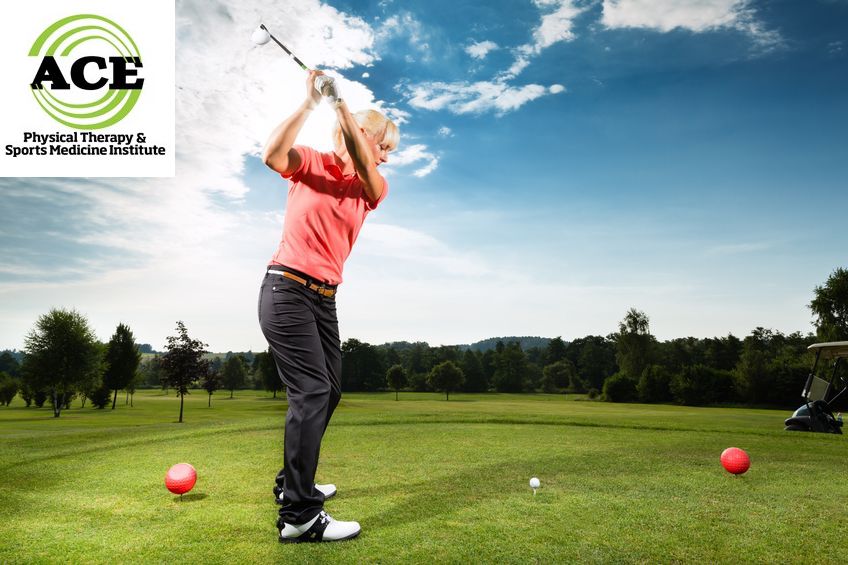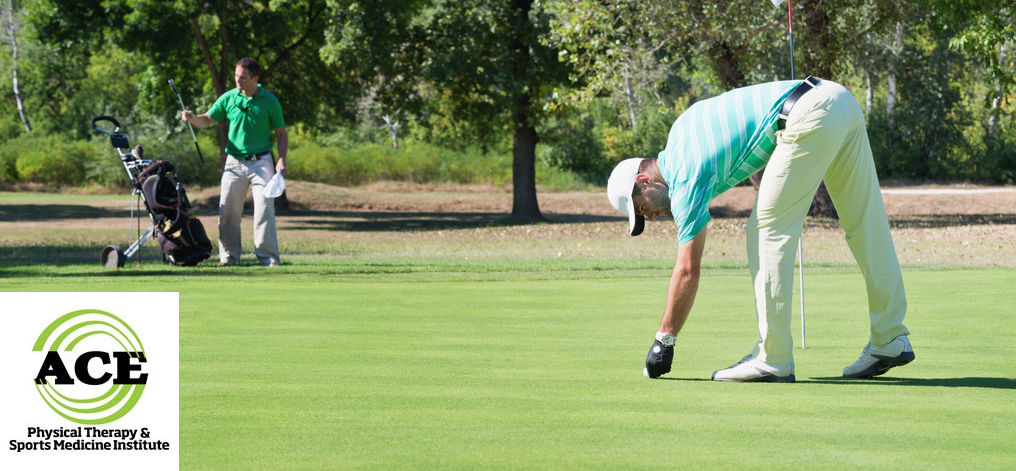GETTING READY FOR GOLF

Tid Bits of Info
- Golf was invented in Scotland over 500 years ago.
- The average swing speed is 84 mph and Tiger Woods swing speed was routinely 130 mph or faster.
- Most golf courses are 18 holes long and the par is 71 or 72 strokes.
- 80% of all golfers will never have a handicap less than 18.
- If you are injured while playing golf seek the advice and treatment of a Physical Therapist.
Every year, millions of Americans enjoy playing golf for sport, social engagement, and stress relief. Golfers of all ages know both the delight and frustration of this sport where you are competing against yourself as much as other people. While it may not seem like an intensive sport, golf actually engages most of your body with rigorous movement. It is vital that you take the time to prepare your body for the movements to avoid musculoskeletal injuries.
Golf requires movement in almost every part of the body and if any part is not trained prior to play, it can be subjected to stresses and strains that are too great for that body part to handle. Consequently, the soft tissues or joint structures can be injured. If a well-rounded training program is performed for several weeks prior to playing, the human body is much better prepared to handle those excessive stresses and strains.
Getting in shape for golf requires a strengthening and stretching program. The strengthening process should include the arms, core, and legs. The “real” power to hit the ball long comes from the legs, hips, and core. The soft tissues (mainly muscles) and joints must be prepared to generate and tolerate that high-velocity torque that occurs during the swing. Exercises such as squats, lunges and medicine ball chops are great for these body parts and will help to keep them injury free during your golf game.
Swinging the club and hitting the ball can cause major issues for the shoulders, elbows, and wrists. Most people that play are strong enough to hit the ball a few times, but during a round of golf the pre-round, practice and actual swings all count and add up. The repetitive action of swinging the club requires muscular strength and endurance in the shoulders and arms. Exercises such as horizontal rows, lat pull downs, lateral raises, wrist rolls, wrist extension, curls and stress ball squeezes are suggested for the upper body. Push-ups and dips would be a great addition if you are looking for more upper body exercises to perform.

The one part of the body that is involved in every aspect of a golf match is the low back and “core.” These body parts are the foundation and primary stabilizers of the rest of the body. This area transfers the force from the legs and hips to the upper body and enables the golfer to swing with force. Planks, side planks, and numerous therapeutic ball exercises should be incorporated into your program. Some core strengthening exercises can incorporate rotational movements and help to prepare the low back for the rotational action that occurs when someone swings a golf club.
General stretching of the legs, hips, low back and shoulders should be a mainstay in every workout program. Prior to playing it is best to perform dynamic stretches and afterward static or dynamic stretches can be performed.
Similar to many other sports that require the use of a piece of equipment the body should be “fitted” to that gear. Various joints can be injured due to the abnormal movements that occur during a golf swing. If the clubs are not the proper size for the individual that is using them, they can cause even more abnormality in the swing. Good technique and equipment can help you play the game of golf a lot better. On the other hand, it can ruin your game and lead to more injuries if your equipment is poorly fitted.
If you get injured while playing golf or want to learn the proper technique for the exercises that were mentioned previously, seek the advice of a Physical Therapist. These licensed healthcare professionals can help you with the strengthening and stretching exercises that should help you avoid an injury during the golf season. You can visit a Physical Therapist without going to the doctor but your insurance plan might require that you have a referral from your Primary Care Physician.
Golf is a great game and can be played by almost anyone. Unfortunately, some of the movements that are associated with the game can be very harmful to different parts of the human body if it is not prepared properly. Be sure to strength train and stretch on a regular basis to attempt to avoid an injury from the game of golf. “GET IN SHAPE TO PLAY THE GAME, DON’T PLAY THE GAME TO GET IN SHAPE!”
























